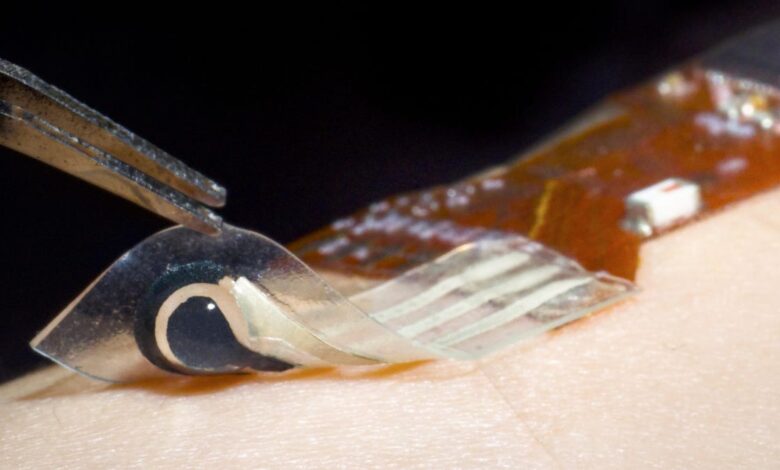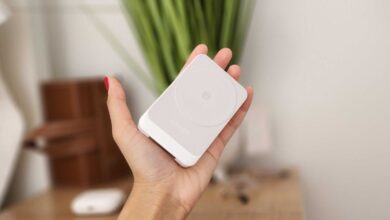No Needles Needed: This Wearable Can Track Your Cholesterol and Lactate Levels


Researchers in Singapore have develop a wearable device It bypasses the need to collect biological fluid samples and could help in early detection of medical conditions such as stroke.
According to a project report, the stretchable hydrogel-based sensor monitors a user’s biomarkers — chemicals found in blood and other bodily fluids — including cholesterol and lactate levels, and is worn directly on the skin. The initiative was led by researchers from the National University of Singapore (NUS) and government agency A*STAR’s Institute of Materials Research and Engineering (IMRE by A*STAR).
Wearable devices provide a non-invasive way to facilitate continuous, real-time monitoring and early detection of diseases such as cardiovascular disease and stroke. This addresses the limitations of current methods for collecting biological fluid samples such as blood, urine and sweat.
Also: These Medical IoT Devices Pose the Biggest Security Risks
The wearable can also monitor athletes’ lactate levels to detect signs of exhaustion and tissue hypoxia, which affect their performance.
“Early disease detection requires rapid, continuous, and convenient monitoring of key biomarkers,” the researchers note. “This development is particularly relevant in areas including chronic disease management, population-wide screening, remote patient monitoring, and exercise physiology.”
The process of collecting biomarkers for analysis can be inconvenient and miss real-time features. Doctors may need to induce sweating with medication when collecting fluid from inactive people, which can be uncomfortable.
Also: Absci and Memorial Sloan Kettering Team Up to Find Cancer Drugs Using AI
Solid epidermal biomarkers have emerged as a form of surrogate health indicator. Found in the stratum corneum, or outermost layer of the skin, these biomarkers have been shown to correlate with diseases such as diabetes, hyperlipoproteinemia, and cardiovascular conditions.
However, they are difficult to detect because traditional devices lack the components needed to monitor epidermal biomarkers in the solid state.
The Singapore researchers say their wearable allows these biomarkers to dissolve and diffuse through the ionically conductive hydrogel layer and undergo electrochemical reactions between the ion layer and the conductive hydrogel layer.
The required physiological data is then transmitted wirelessly to an external user interface via a flexible printed circuit board, providing continuous monitoring.
Also: Samsung is trying to beat Apple with these two life-changing health-tracking features
In clinical studies, the sensor showed correlations between biomarkers detected on the skin and those found in blood samples, demonstrating its accuracy, the researchers said. It was also able to detect solid-state lactate and low levels of cholesterol.
“This wearable sensor is the world’s first that can monitor biomarkers on dry or non-sweaty skin,” said Yang Le, principal scientist and head of A*STAR’s IMRE flexible electronics and sensors division. “The sensor’s double-layer hydrogel electrodes interact with and detect biomarkers on our skin, allowing them to become a new type of health indicator. The stretchable design also enhances comfort and accuracy, by adapting to the natural elasticity of our skin.”
Yang says the wearable could change the way health and lifestyle are tracked, especially for people with chronic conditions that require constant monitoring.
For example, it could potentially replace conventional finger-prick tests for diabetes patients, said Liu Yuxin, assistant professor at the NUS Institute of Health Innovation & Technology and the N.1 Health Institute. Liu added that it could also be applied to glucose tolerance tests, so pregnant women would no longer have to endure repeated blood draws.
Singaporean researchers are now working to improve the performance of the wearable device by increasing its sensitivity and operating time, while also supporting other biomarkers.
They are also working with hospitals to provide further clinical validation and allow patients to try the technology, particularly for continuous glucose monitoring.
In 2021, NUS researchers developed VeCare CareA bandage that can detect and wirelessly send medical information related to chronic wounds, such as temperature and bacteria type. Capable of collecting and transmitting data in less than 15 minutes, the wearable sensor could speed up the assessment of such wounds and provide more timely treatment.
Another research team from a Singapore university in 2021 also developed a way to exploiting the human body as an energy conduit and wearables. The technology can draw energy from a single device, such as a mobile phone in a wearer’s pocket, to wirelessly charge other wearables placed on the body. It can also draw unused energy from electronic devices in the home or office to power wearables.




